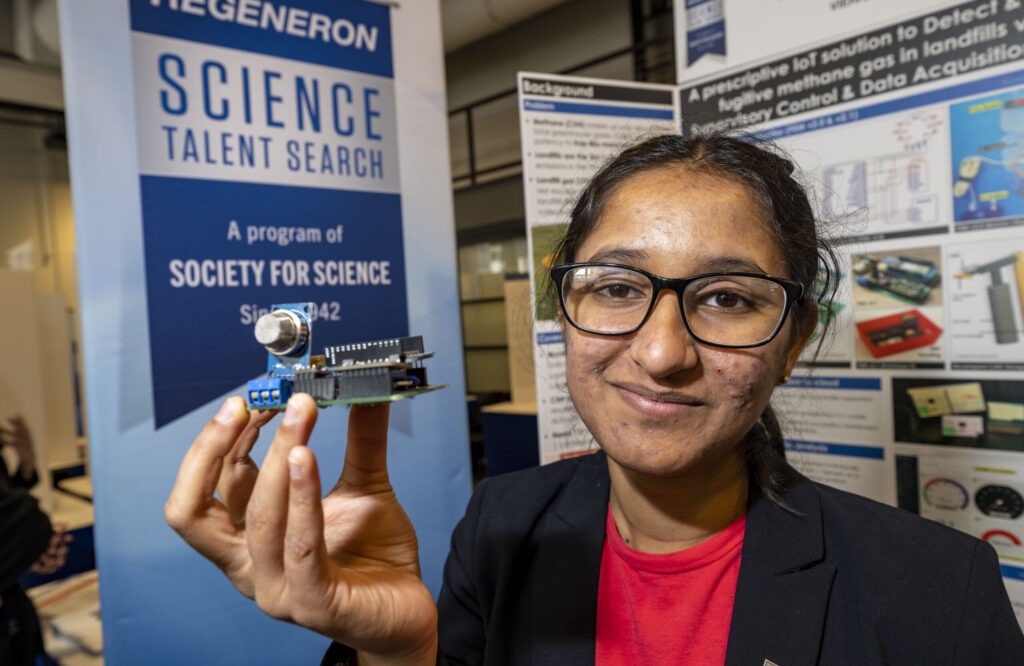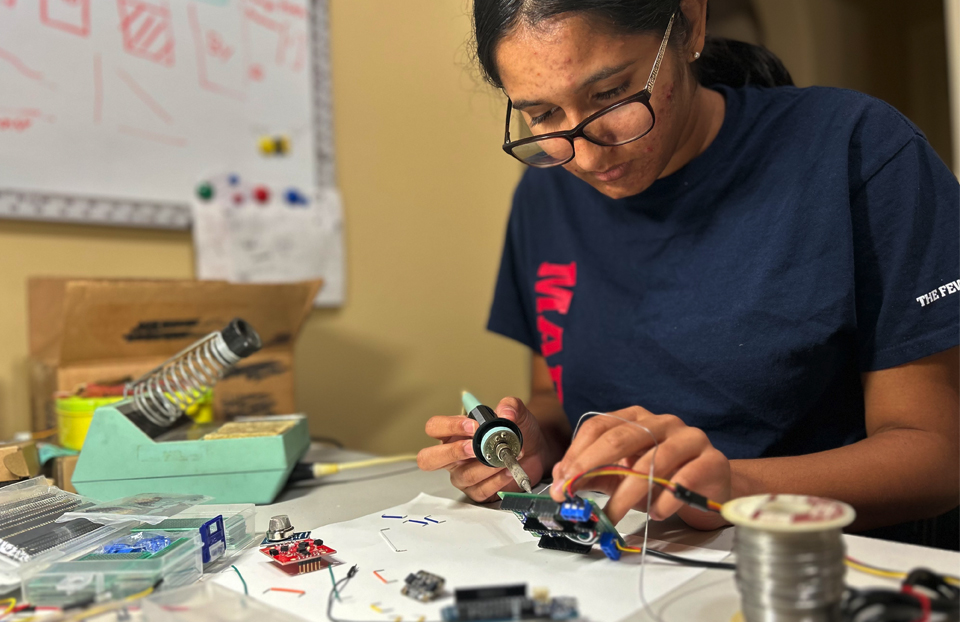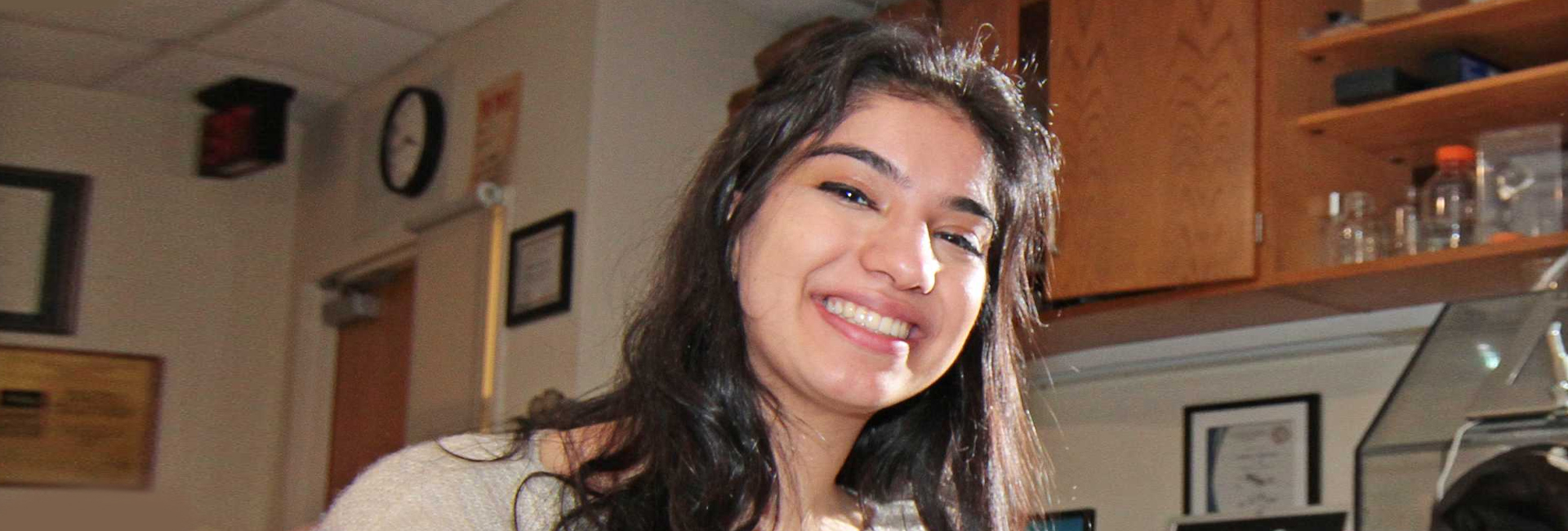(May 14, 2023) “Normally, I feel like we tend to only attribute global warming to just fossil fuel burning, and a lot of times we tend to dismiss issues that we can’t see. One of these issues is methane which comes from landfills,” says Florida-based Lavanya Natarajan, who is on a mission to decrease methane emission from landfills through her discovery. An affordable and wireless device that she developed in the recent past helped her earn a spot in the top 40 finalists of Regeneron Talent Search 2023. Her device brings a breath of fresh air to the ongoing fight against climate change, and represents the spirit of young scientific minds determined to find practical solutions to the world’s most pressing issues.
For someone who has been doing science fair projects since the third grade, Lavanya was always looking to find solutions to problems. Always intrigued by the environment, she learnt about climate change at a young age and realised that fossil fuel wasn’t the only contributor to the climate crisis. Digging deep, she found that methane gas found in landfills was equally harmful, and was inspired to develop a solution to mitigate the environmental harm caused by landfills. She set her mind to tackling the methane issue, an often overlooked yet potent greenhouse gas that significantly contributes to global warming.

Lavanya Natarajan
Methane gas, while not as prevalent as carbon dioxide, is far more destructive in the short term due to its ability to trap heat in the Earth’s atmosphere. Over 20 years, methane is 84 times more potent as a heat-trapping gas than carbon dioxide. Landfills are a major source of methane emissions as organic waste decays under anaerobic conditions, making them a critical target in climate change mitigation efforts.
Lavanya’s device aims to address this issue head-on. “A large portion of these methane emissions escape from landfills and they fuel climate change. What I did was develop an IoT system to measure, manage, predict, and mitigate these methane emissions and other landfill metrics in real-time,” she said in an interview.


2023 Regeneron STS
The device, which took three months to build, remotely monitors a landfill’s greenhouse gases and measures other parameters like temperature, pressure, altitude and humidity. The information is then sent to an Arduino microcontroller that stores the data and can wirelessly send everything to a dashboard Natarajan created that can be accessed anywhere. According to the Society for Science website, ideally, methane is pumped out of landfills when concentrations get high, but measuring it is cumbersome, so pumping gets delayed, which means that much of the methane escapes. This new device should make it easier to pump out the methane appropriately. She tested her device first in the lab that she set up in her family’s garage and later in an actual landfill.
By providing an affordable and efficient solution to the methane problem, Natarajan’s device has the potential to revolutionize waste management practices around the globe. While more affluent countries have the resources to implement methane capture and conversion systems, these are often out of reach for developing nations. The simplicity and cost-effectiveness of Natarajan’s device could make it a feasible solution for these countries, opening the door to a more inclusive and equitable approach to global climate action.


Lavanya, who is a senior at Viera High School, also teaches coding and mentors kids on how to solve Rubik’s cubes. The global recognition she received at the Regeneron Talent Search 2023 speaks volumes about the significance of her work. At a time when the world grapples with the existential threat of climate change, the need for innovative and accessible solutions like Lavanya’s cannot be overstated.
Her story is a testament to the power of young minds and their capacity to drive change. Her journey, from witnessing the environmental struggles of her hometown to becoming a beacon of hope in the fight against climate change, is an inspiration to us all. It serves as a powerful reminder that no matter where we come from, we all have a role to play in preserving our planet for future generations. “By capturing the methane, we can actually use it for power. And overall, I feel like this can help the greenhouse gas effect and it can also reduce the overall temperature by 1.5°C by 2030, which is something they’re doing in the Paris Environmental Agreement,” says the teenager who loves singing and playing traditional Indian music.
- Follow Lavanya Natarajan on LinkedIn




